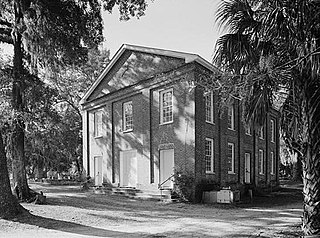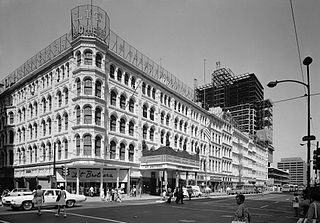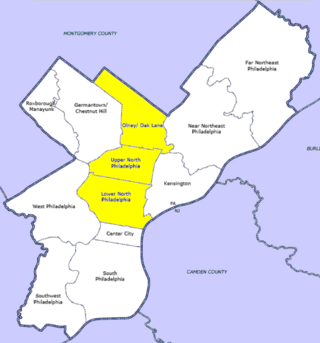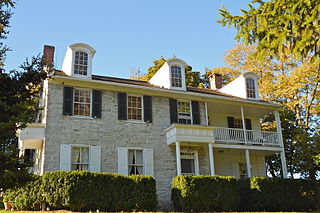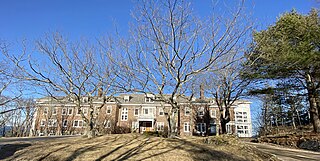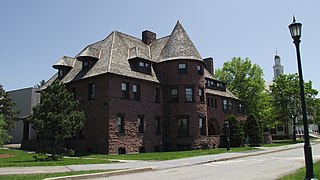| Name | No. | Image | Architect | Built | Address/Location | Notes | HABS No. |
|---|
Bennett Hall
(now Fisher–Bennett Hall) | 17 |  | Stewardson & Page | 1925 | 3340 Walnut Street
(SE corner 34th & Walnut Streets) | Houses the English Department | |
"The Castle"
(Psi Upsilon Fraternity) | 24 |  | William D. Hewitt | 1897–1899 | 250 South 36th Street
(SW corner 36th Street & Locust Walk) | | |
| College Hall | 21 |  | Thomas W. Richards | 1871–1872 | College Green, south of Locust Walk | 
From Woodland Avenue, 1892 | PA-1643 |
Delta Tau Delta
(now Sweeten Alumni House) [3] | 27 | | Bissell & Sinkler | 1914
1982 alterations by Dagit/Saylor | 3533 Locust Walk | | |
Delta Upsilon
(now Robbins House) [4] | 26 | | Lester Kintzing | 1913 | 3537 Locust Walk | Later housed Kappa Alpha Fraternity [5]
Now houses Jerome Fisher Management and Technology Center | |
| Dental Hall (now Hayden Hall) | 14 |  | Edgar Viguers Seeler | 1896 | 3320 Smith Walk | Became the Fine Arts Building in 1915 | PA-6176 |
| Franklin Field | 9 |  | Day & Brother
Charles Klauder
Horace Trumbauer | 1904
1922, wooden grandstands demolished; concrete grandstands added by Klauder
1925, upper deck added by Trumbauer | 233 South 33rd Street
(NE corner 33rd & South Streets) | 
Concrete grandstands under construction, 1922 | |
Furness Library [6]
(now Fisher Fine Arts Library) | 18 | 


 | Furness and Evans | 1888–1891
1903–1905, Lea Library addition by Furness & Evans
1914–1915 Duhring Wing addition by Furness, Evans & Co.
1931 H. H. Furness Reading Room addition by Robert Rodes McGoodwin
1964 alterations to Duhring Wing by Suer, Livingston & Demas
1986–1991 restoration by Venturi, Rauch, Scott Brown & Associates, CLIO Group, and Marianna Thomas Architects | 220 South 34th Street
(34th Street & Locust Walk) | The Henry Charles Lea Library and Reading Room addition (1905) expanded the library eastward:
The Duhring Wing (1915) expanded the library's bookstacks southward. It was converted into office space in 1964. [7]
The Horace Howard Furness Reading Room addition (1931) expanded the library westward, and housed his Shakespeare collection until 1963. [8] : 166 It was converted into the Arthur Ross Gallery in 1983.
The 1986–1991 restoration removed interior partitions, and restored the full 4-story height of the Main Reading Room. [9] | PA-1644 |
| Houston Hall | 20 |  | William C. Hays and Milton Bennett Medary
(under Frank Miles Day) | 1895
1936 expansion by Robert Rodes McGoodwin | 3501 Spruce Street | The 1936 expansion added a 2-story dining hall to the east end, and a student lounge and clubrooms to the west end. | |
| Hutchinson Gymnasium and Palestra | 11 |  | Day & Klauder
Charles Klauder | 1926, Palestra
1928, Hutchinson Gymnasium | Palestra: 233 South 33rd Street
Hutchinson Gymnasium: 219 South 33rd Street | | |
| Irvine Auditorium | 19 |  | Horace Trumbauer | 1926–1932 | 3401 Spruce Street
(NW corner 34th & Spruce Streets) | | |
Lea Laboratory of Hygiene [10]
("Smith Labs")
DEMOLISHED | 15 |  | Collins & Autenreith | 1891
Demolished 1995 | 215–225 South 34th Street | Identified in 1978 NRHP nomination as "John Harrison (Smith) Chemistry Lab" [2]
Vagelos Laboratories was built on the site in 1997. [11] | PA-6175 |
Logan Hall
(originally Medical Hall,
now Claudia Cohen Hall) | 22 |  | Thomas W. Richards | 1874 | 249 South 36th Street
(36th Street between Spruce Street & Woodland Walk) | 
Logan Hall in 1890 | |
Medical School
(now Perelman School of Medicine at the University of Pennsylvania) | 5 |  | Cope & Stewardson
Stewardson & Page | 1904
1928 | 3620 Hamilton Walk | 
John Morgan Building | |
| Moore School of Electrical Engineering | 12 |  | Morris & Erskine | 1921
1926 renovation by Paul Cret
1940, 3rd story added by Alfred Bendiner | 200 South 33rd Street
(SW corner 33rd & Walnut Streets) | | |
Morgan Laboratory of Physics
2 adjacent buildings:
Morgan Building [12]
Music Building (now Lerner Center) [13] | 16 | 
 | Cope & Stewardson | 1890–1892 | Morgan Building: 209 South 34th Street
Music Building: 201 South 34th Street | Built as the Foulke & Long Institute for Orphan Girls of Soldiers and Firemen. Its school became the Morgan Building; its dormitory became the Music Building.
The Morgan Building later housed the School of Nursing.
The Music Building was renovated and expanded into the Lerner Center, 2010. | PA-6177
PA-6177-A
PA-6177-B |
Phi Delta Theta
(now Jaffe History of Art Building) | 28 |  | Oswin W. Shelly | 1900
1924 alterations
1994 expansion by Tony Atkins | 3405 Woodland Walk
(SW corner 34th & Walnut Streets) | Later housed the Institute for Environmental Studies
Now houses the History of Art Department | |
| Phi Kappa Sigma | 25 | | Bissell & Sinkler, and Marmaduke Tilden | 1910 | 3539 Locust Walk
(NE corner 36th Street & Locust Walk) | | |
| Quadrangle Dormitories | 3 |  | Cope & Stewardson
Stewardson & Page
Trautwein & Howard | 1895–1912
1912–1929
1945–1959 | 3700 Spruce Street
(bounded by 36th Street, Spruce Street, Woodland Walk, 38th Street, & Hamilton Walk) | 
Upper Quad

Lower Quad | PA-1645 |
| Richards Medical Research Laboratories | 4 |  | Louis Kahn | 1962 | 3700–3710 Hamilton Walk | 
Entrance porch | |
| Towne Building | 13 |  | Cope & Stewardson | 1903 | 220 South 33rd Street
(NW corner 33rd Street & Smith Walk) | | |
| University Museum | 8 |  | Wilson Eyre, Cope & Stewardson, and Frank Miles Day | 1895-1899
1912 addition by Wilson Eyre
1929 addition by
1971 wing by Mitchell/Giurgola [14]
2020 renovation by | 3260 South Street
(SE corner 33rd & South Streets) | 
The Museum commission was shared by three architectural firms. | PA-1646 |
| Veterinary School and Hospital [15] | 1 |  | Cope & Stewardson
Cope & Emlyn Stewardson | 1906
1912 expansion | 3801 Woodland Walk
(NW corner 38th Street & Woodland Walk) | Following John Stewardson's death, Walter Cope partnered with Stewardson's brother, Emlyn. The firm later became Stewardson & Page. | |
Weightman Hall
(Gymnasium and Field House) | 10 |  | Frank Miles Day | 1904
1905 White Training House added by Horace Trumbauer | 235 South 33rd Street
(33rd Street between Spruce Street & Smith Walk) | | |
| Wistar Institute | 23 |  | G. W. & W. D. Hewitt | 1894
1897 addition by Hewitt Bros. | 3601 Spruce Street
(NW corner 36th & Spruce Streets) |  | |
Zoological Laboratory
(now Leidy Laboratories of Biology) [16] | 2 |  | Cope & Stewardson | 1910 | 3740 Hamilton Walk
(SE corner 38th Street & Hamilton Walk) |  |
| Unidentified | 6 | | | | | | |
| Unidentified | 7 | | | | | | |















































